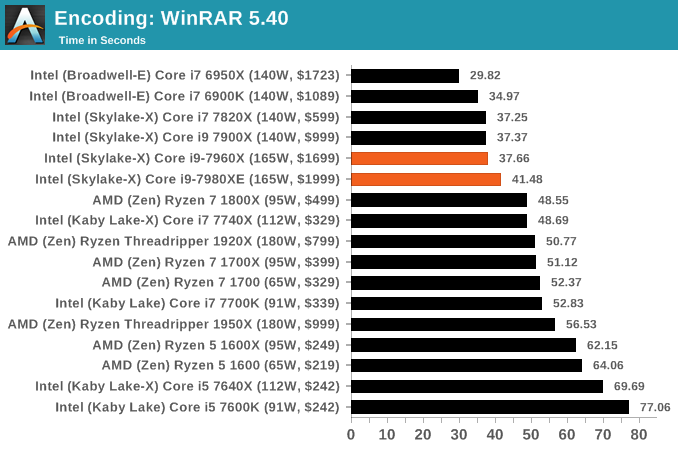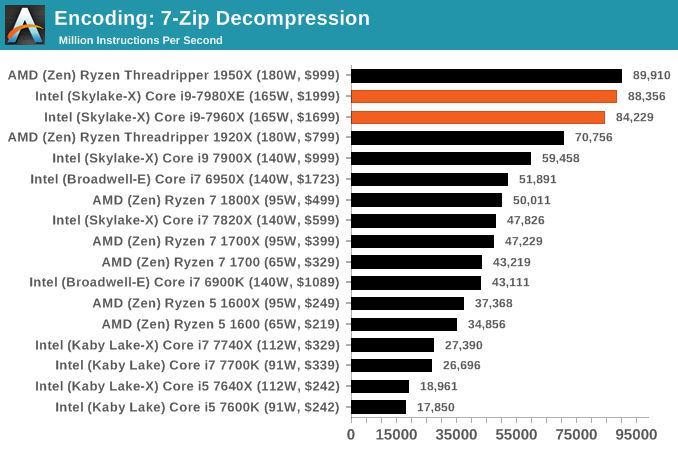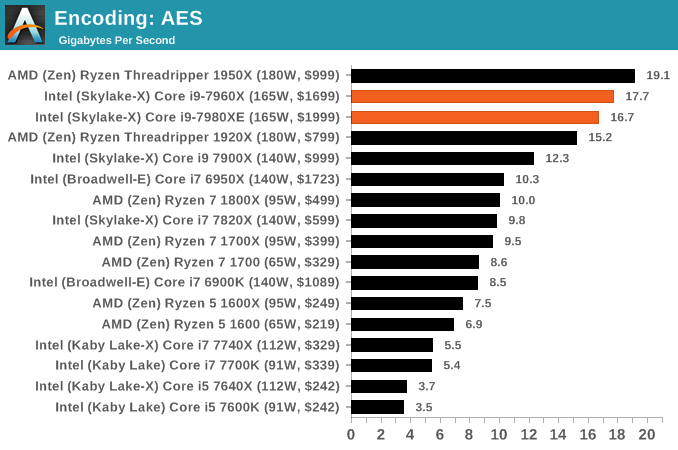goldstone77
Distinguished
gamerk316 :
Compression tends to be a more serial based operation, and is a good test for single core performance.
Decompression tends to be a more parallel based operation, and is a good test for total CPU performance.
Good is subjective term. And based on other synthetic benchmarks in comparison is only shows those processors are more or less turned for each operation.











